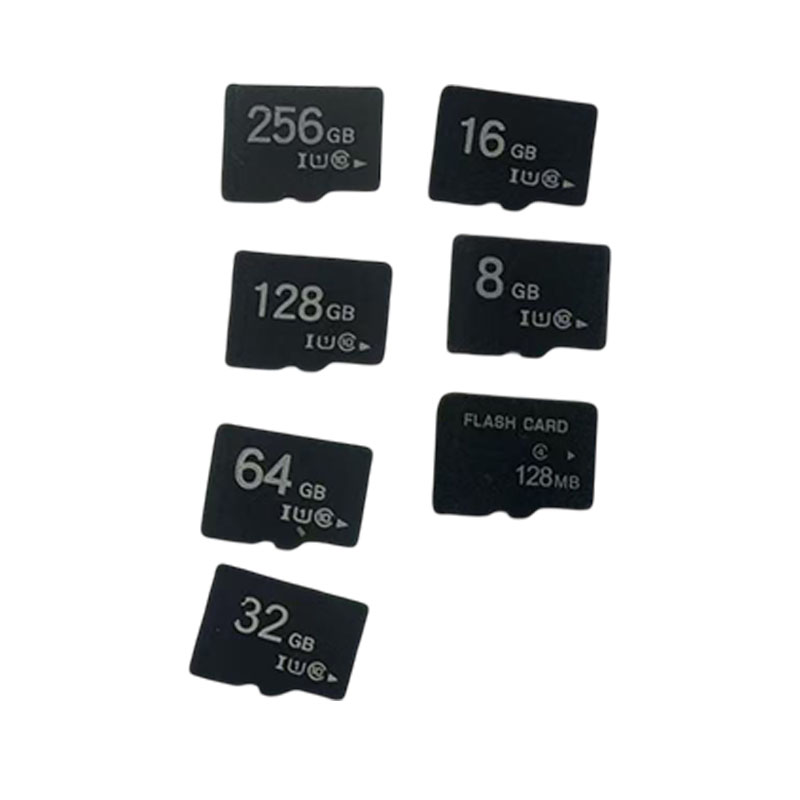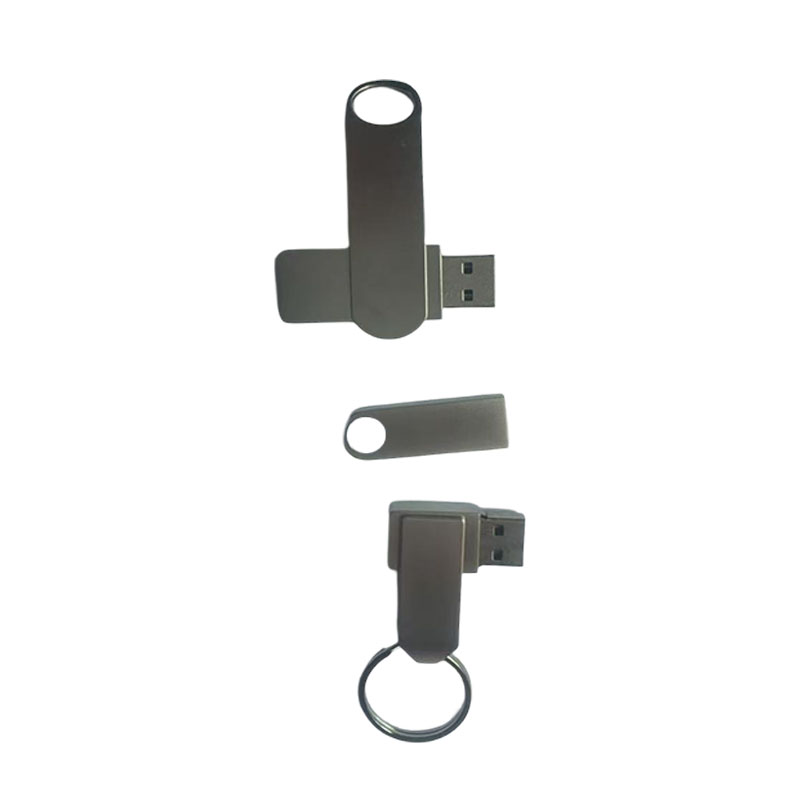How does the u disk partition management function achieve efficient data classification storage?
Release Time : 2025-10-23
The U Disk partition management feature logically divides storage space, providing a structured framework for data classification and storage. Its core value lies in isolating different types of data, thereby improving file retrieval efficiency, optimizing storage resource allocation, and enhancing data security. This design overcomes the limitations of traditional U Disk single-partition storage, enabling users to flexibly manage data based on usage scenarios, achieving both improved storage efficiency and operational convenience.
Partition management is based on logical isolation and independent access control. U Disk uses the firmware of the main control chip to divide the physical storage medium into multiple logical partitions, each with its own file system table and access permissions. For example, users can store work documents, multimedia files, and system backups in separate partitions, eliminating retrieval difficulties caused by mixed file types. This isolation mechanism also supports setting read and write permissions for specific partitions. For example, sensitive data can be stored in an encrypted partition, accessible only by authorized software or password verification, effectively preventing the risk of data leakage.
The efficiency of data classification storage is reflected in significantly improved file retrieval speeds. When a USB disk uses a single partition for storage, all files share the same root directory. As data volume grows, the directory hierarchy becomes complex, requiring users to traverse a large amount of irrelevant content to find specific files. Partition management, however, distributes data by category into different logical areas, allowing users to directly locate the desired partition, significantly reducing the search scope. For example, a photographer can store RAW photos in the "Photographic Materials" partition and video editing projects in the "Video Projects" partition. During post-processing, they can directly access the corresponding partitions to quickly access the required resources without having to sift through a large number of files.
Flexible storage resource allocation is another advantage of partition management. Different types of data require different storage space. For example, high-definition videos require large, contiguous storage capacity, while text files require less space. Partition management allows users to dynamically adjust partition sizes based on data characteristics. For example, a USB disk can be initially divided into three partitions of equal size. As video footage accumulates, the partition resizing tool can be used to merge free space from partitions into the video partition to meet growing storage needs. This dynamic allocation capability eliminates the hassle of data migration caused by insufficient space in a single partition and improves storage resource utilization.
Partition management also facilitates convenient data backup and recovery. Users can store critical data such as system images and driver backups on separate partitions, isolated from daily data. When a system crash requires recovery, the image file can be directly read from the backup partition without worrying about interference with daily files. Furthermore, partition management supports quick formatting or bad sector repair of specific partitions. If a partition fails, data on other partitions remains functional, reducing the risk of complete data loss due to partial damage.
Multi-system compatibility is crucial for partition management in cross-platform use. Different operating systems have different file system support. For example, Windows defaults to NTFS or FAT32, while macOS is more compatible with HFS+ or APFS. Partition management allows users to create multiple partitions on a USB disk compatible with different file systems. For example, one partition can be formatted as FAT32 for sharing between Windows and macOS, another as exFAT to support large file transfers, and an EXT4 partition for Linux. This design enables USB disks to seamlessly adapt to various devices and improves the efficiency of cross-platform data exchange.
From a user experience perspective, partition management simplifies complex operations through visual tools. Modern USB disk management software offers a graphical interface, allowing users to resize partitions, modify partition labels, and set access passwords by dragging and dropping, eliminating the need to memorize complex command-line commands. For example, one brand's USB disk software supports a "one-click partitioning" feature. Users simply select a preset template (such as "work partition + entertainment partition + backup partition"), and the software automatically divides and formats the partitions, lowering the technical barrier and enabling even ordinary users to easily and efficiently manage data.
The USB disk partition management feature establishes an efficient data classification storage system through logical isolation, flexible resource allocation, fast retrieval, security protection, multi-system compatibility, and user-friendly operation. It not only addresses the pain points of traditional storage methods, such as data disorganization, inefficient retrieval, and resource waste, but also, through its structured design, meets users' diverse needs for storage security, ease of use, and cross-platform adaptability. This has become one of the core technologies that enhance the value of modern USB disk storage.
Partition management is based on logical isolation and independent access control. U Disk uses the firmware of the main control chip to divide the physical storage medium into multiple logical partitions, each with its own file system table and access permissions. For example, users can store work documents, multimedia files, and system backups in separate partitions, eliminating retrieval difficulties caused by mixed file types. This isolation mechanism also supports setting read and write permissions for specific partitions. For example, sensitive data can be stored in an encrypted partition, accessible only by authorized software or password verification, effectively preventing the risk of data leakage.
The efficiency of data classification storage is reflected in significantly improved file retrieval speeds. When a USB disk uses a single partition for storage, all files share the same root directory. As data volume grows, the directory hierarchy becomes complex, requiring users to traverse a large amount of irrelevant content to find specific files. Partition management, however, distributes data by category into different logical areas, allowing users to directly locate the desired partition, significantly reducing the search scope. For example, a photographer can store RAW photos in the "Photographic Materials" partition and video editing projects in the "Video Projects" partition. During post-processing, they can directly access the corresponding partitions to quickly access the required resources without having to sift through a large number of files.
Flexible storage resource allocation is another advantage of partition management. Different types of data require different storage space. For example, high-definition videos require large, contiguous storage capacity, while text files require less space. Partition management allows users to dynamically adjust partition sizes based on data characteristics. For example, a USB disk can be initially divided into three partitions of equal size. As video footage accumulates, the partition resizing tool can be used to merge free space from partitions into the video partition to meet growing storage needs. This dynamic allocation capability eliminates the hassle of data migration caused by insufficient space in a single partition and improves storage resource utilization.
Partition management also facilitates convenient data backup and recovery. Users can store critical data such as system images and driver backups on separate partitions, isolated from daily data. When a system crash requires recovery, the image file can be directly read from the backup partition without worrying about interference with daily files. Furthermore, partition management supports quick formatting or bad sector repair of specific partitions. If a partition fails, data on other partitions remains functional, reducing the risk of complete data loss due to partial damage.
Multi-system compatibility is crucial for partition management in cross-platform use. Different operating systems have different file system support. For example, Windows defaults to NTFS or FAT32, while macOS is more compatible with HFS+ or APFS. Partition management allows users to create multiple partitions on a USB disk compatible with different file systems. For example, one partition can be formatted as FAT32 for sharing between Windows and macOS, another as exFAT to support large file transfers, and an EXT4 partition for Linux. This design enables USB disks to seamlessly adapt to various devices and improves the efficiency of cross-platform data exchange.
From a user experience perspective, partition management simplifies complex operations through visual tools. Modern USB disk management software offers a graphical interface, allowing users to resize partitions, modify partition labels, and set access passwords by dragging and dropping, eliminating the need to memorize complex command-line commands. For example, one brand's USB disk software supports a "one-click partitioning" feature. Users simply select a preset template (such as "work partition + entertainment partition + backup partition"), and the software automatically divides and formats the partitions, lowering the technical barrier and enabling even ordinary users to easily and efficiently manage data.
The USB disk partition management feature establishes an efficient data classification storage system through logical isolation, flexible resource allocation, fast retrieval, security protection, multi-system compatibility, and user-friendly operation. It not only addresses the pain points of traditional storage methods, such as data disorganization, inefficient retrieval, and resource waste, but also, through its structured design, meets users' diverse needs for storage security, ease of use, and cross-platform adaptability. This has become one of the core technologies that enhance the value of modern USB disk storage.







